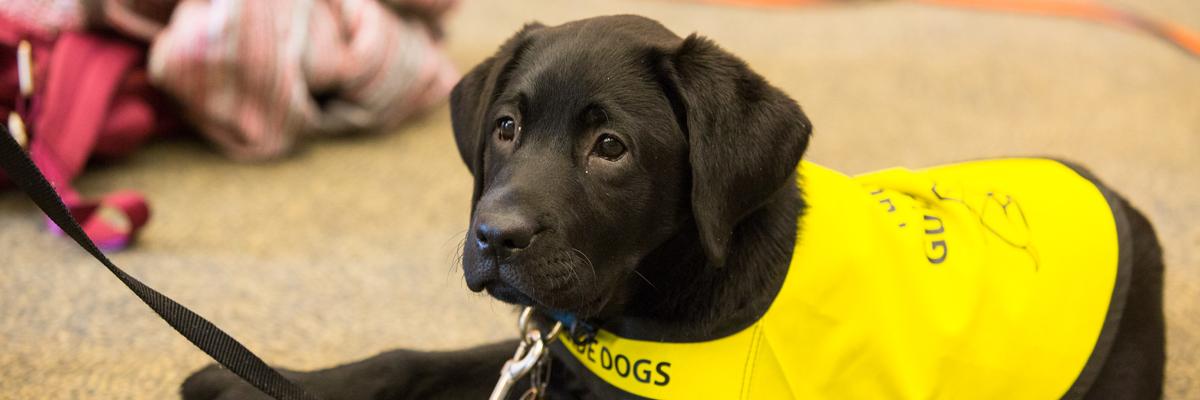Socialization - The first step to becoming a guide dog
By Carl McIntosh, Puppy Raising Supervisor, CNIB Guide Dogs
Whether it's exploring a car port or taking a trip downtown, socializing puppies is an essential role of CNIB Guide Dogs. A future guide dog begins this part of his/her training shortly after settling into his/her puppy raiser's home. To start, the puppy is introduced to people of all ages (children, teens and adults). At this stage, it's important to take it slow – all social outings must be short and sweet, as the puppy is just getting comfortable in his/her surroundings. That said, when puppies are adjusting to new situations, we must not coddle them. Instead, we must encourage them and give them verbal support. This will strengthen their reactions. A puppy raiser strives to expose their pup to one new experience every day while keeping outings as stress-free as possible.
Some behavioural signs of stress are:
- yawning
- panting
- lip smacking
- whining
- barking
- overall restlessness
- defecating (in situations where they've been previously clean)
Don't worry if you see some of these signs. You just need to take a moment to sit down with the puppy and let him/her watch the world go by. For example, if you were bringing the puppy onto the subway for the first time and you observed some signs of stress while standing on the platform, you would take a seat on a bench and allow him/her to watch the trains come in and out of the station. In this case, you would not get onto the subway. You would come back a few days later to see your puppy's reaction to the previously exposed environment. Following these simple guidelines will ensure this future guide dog is well-socialized.
Reminder: The puppy shouldn’t be exposed to other animals until he/she is fully vaccinated at 16-weeks-old.
